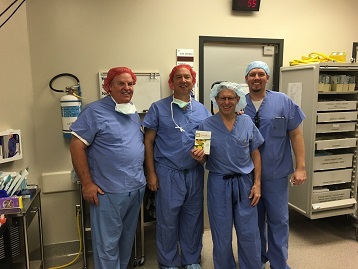Symfony Lense

A long-awaited revolution in intraocular lenses (IOLs) made its Utah and Intermountain West debut in the hands of cataract surgeon, Alan S. Crandall, MD, at the University of Utah's John A. Moran Eye Center today.
The U.S. Food and Drug Administration (FDA) approved the first in a new category of IOLs, Abbott's Tecnis Symfony®, in the United States on July 15, 2016. They are the only lenses available in the U.S. that provide improved vision at near, intermediate, and far distances, and points in between without glasses. There is also less "halo and glare" challenges some patients experience after cataract surgery. The FDA approval includes a version of the lens for people with astigmatism, the Tecnis Symfony Toric IOL.
Cataract Treatment
"IOLs have been the standard cataract treatment for years," says Dr. Crandall, "and advances in technology have really made life easier for so many of my patients. But the Symfony is a truly exciting new option that will reduce the need for patients to wear contact lenses or glasses after cataract surgery. It is especially welcome for those who have difficulty focusing on objects at near distances because of presbyopia. It's going to make life a lot easier for them."
Cataracts are a common eye condition where the natural lens becomes clouded, impairing a patient's vision. According to the National Eye Institute, more than 20 percent of Americans will have cataracts by the age of 65, and the prevalence increases with age. In cataract surgery, the clouded natural lens is removed and replaced with an IOL. It is one of the most commonly performed procedures in the United States.
Clinical Trials
Results from clinical trials show the Tecnis Symfony IOL has a low occurrence of nighttime glare and halos similar to that of a standard monofocal lens, while also providing continuous vision at all ranges without any drop-offs in between. In fact, 97 percent of patients in the trial indicated that they would elect to have the lens implanted again.
Alan Crandall, MD
Alan S. Crandall, MD, is Senior Vice Chair of the Department of Ophthalmology and Visual Sciences, Director of Moran's Glaucoma and Cataract Division, Co-director of Moran's Global Outreach Division, the Val A. and Edith D. Green Presidential Endowed Chair in Ophthalmology, and past president of the American Society for Cataract and Refractive Surgery.